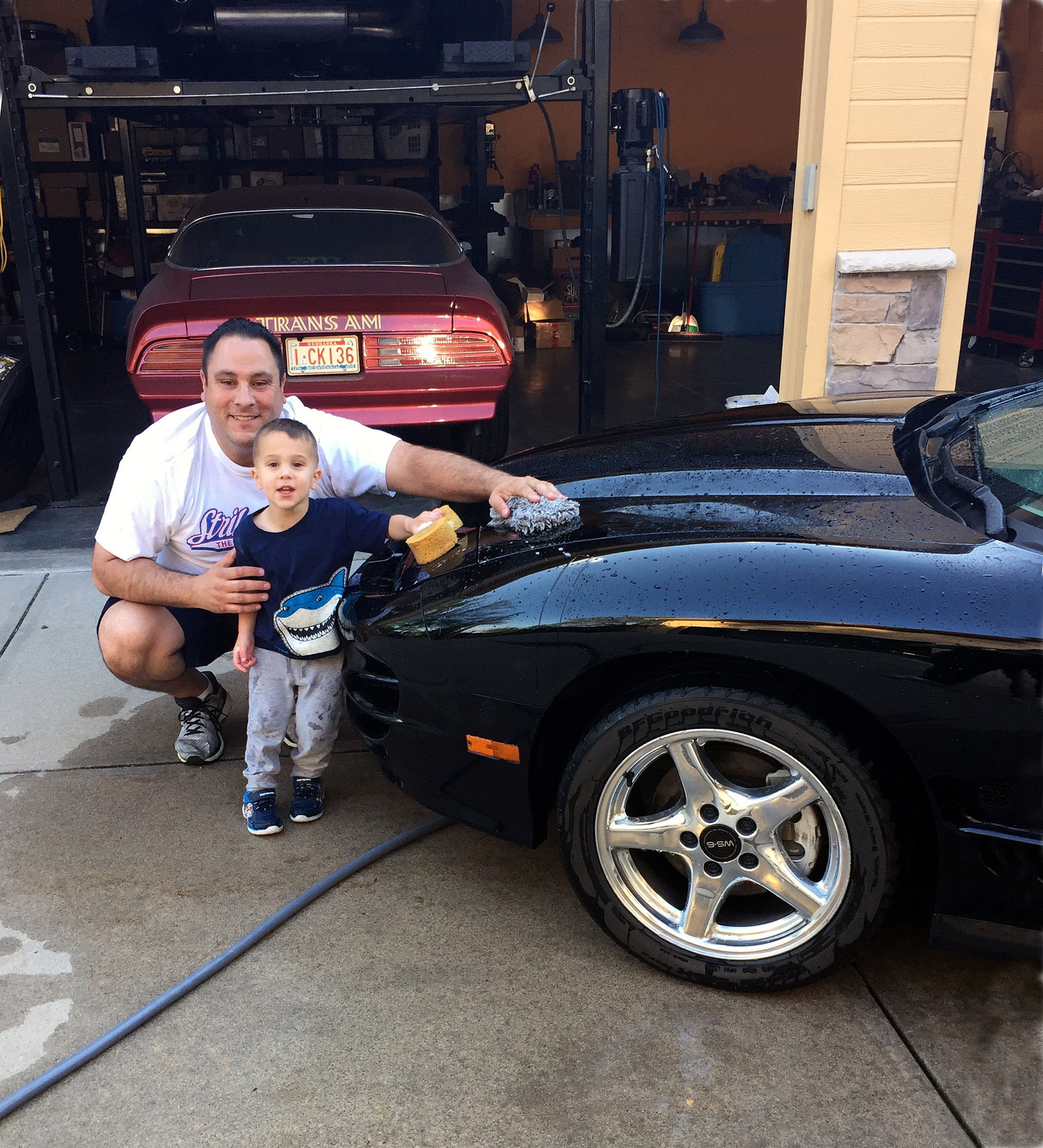This book is the second in the series of Definitive Guides to the history and details of the Pontiac Firebird, by noted automotive author, Rocky Rotella. Our club had a small part in helping Rocky with his first book: The Definitive Firebird & Trans Am Guide 1967-1969, by rounding up a number of our club member’s Firebirds for a photo shoot in the summer of 2015. You will see several Firebirds owned by our members throughout the pages of that book.

Midwest Firebirds’ Technical Advisor Dave Armstrong discussing the details of his 1969 Matador Red Ram Air III convertible with Rocky. You will find this beautiful Firebird featured on several pages of Rocky’s first book.
The second generation Firebird itself is quite remarkable, and resilient when you realize it was maybe the only true four-seat, performance car coming out of Detroit for all of those years. Weathering the perfect storm of government regulations, high gas prices and insurance premiums that signaled an end to the muscle car era. In 1973 Pontiac introduced the race-bred Super Duty 455 ci engines in Formula Firebirds and Trans Ams when most of Detroit was down-sizing their engine offerings. When the Mustang hit the “malaise” years, and Ford developed the Mustang II, and even the Camaro’s horse power was declining, Pontiac always had the Trans Am, with power that only the Corvette could match.
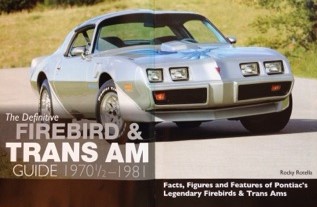
I think this book is a must-have for the library of any Firebird enthusiast. It contains the detailed history of the design and development of the second generation of Firebird, and all the changes throughout its eleven-year run from 1970 to 1981. Rocky looks closely at the car, year by year, discussing the subtle changes Pontiac made to make each year of the second generation Firebird unique. I had the opportunity to interview Rocky for this review and ask him some questions I thought would be of interest to our readers. Here’s my first question: “This is the second book in a series, do you plan on continuing the series with a book on the third and fourth gen Firebirds?”
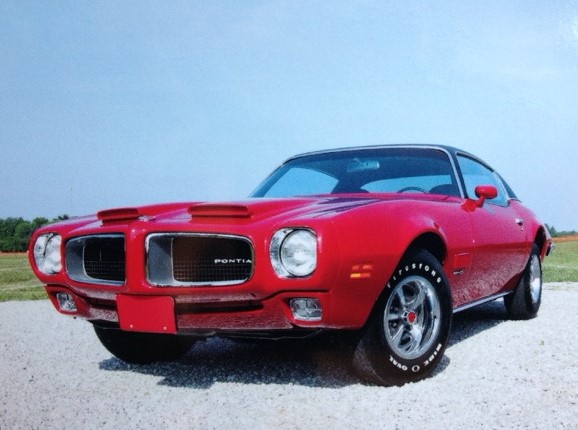
Rocky said; “CarTech Books has a series that it calls its Definitive Guides. They were hardback, had a cover price of $39.95, and were hard limited to 192 pages. I was asked to author a Definitive Guide for ’67-81 Firebirds. The level of detail I gathered was too much to fit into a single 192-page book, so the original project was split into two. The natural breakpoint was first-generation and second-generation.
The ‘67-69 Firebird book was released in September 2016. In the time it took to finish the ‘70-81 book, CarTech revised its entire Definitive Guide series to make it more economical for buyers. Books remained at 192 pages, but went to paperback and cover price was reduced to $34.95. While I had hoped to author a second hardback, I learned that move gave me the chance to extend the ‘70-81 Firebird book to 224 pages. If it would have remained hardback, I would have had to trim 32 pages of content from the book, and I really didn’t want to do that. So readers received even more content at a lesser cost.
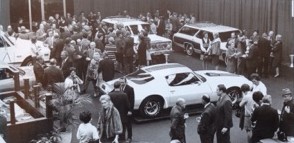
A 1970 Trans Am, being unveiled to buyers.
As for third- and fourth-generation books, I’ve had that discussion with CarTech. At present, it seems that Firebirds of those eras don’t have that strong of a hobbyist following that warrants me writing and CarTech to producing one or two additional books. That’s not to say these cars aren’t wonderful examples of Pontiac performance. I owned and drove regularly a ’90 Formula 350 and presently own two LS1-powered WS6 Trans Ams. I love third- and fourth-generation Firebirds as much as first- and second-gens. CarTech would need to determine how much demand is out there for either book before proceeding.”
Rocky’s love of Pontiacs and Firebirds in particular runs deep, he currently owns a ’76 455 4-speed Trans Am, 2001 WS6, 6-speed Trans Am he bought new, and a 1999 WS6 Trans Am. His father’s ’72 455 HO, 4-speed Trans Am had a marked impression on the young Mr. Rotella. Like many of us with children, Rocky hopes to pass on the love and passion for these classic Pontiacs to his son, Rocco, and you will find both of them together at many Pontiac events throughout the country. I asked Rocky about his Dad’s ’72 Trans Am, and he replied; “My dad still owns the ’72 Trans Am that’s on the cover. He also owns the Admiralty Blue ’74 Trans Am found in Chapters 3 and 4. He still enjoys them regularly and we work on them together frequently. I can’t imagine our family ever without them.”

Some early front end design ideas for the second gen Firebird. The design on the right, by Bill Porter is from the spring of 1968.
In his Introduction, Rocky states what this book is all about and why he is uniquely qualified to write it; “In my years as a professional author writing for such publications as High-Performance Pontiac, Car Craft, Hemmings Muscle Machines, and Hot Rod magazines, I had contacted dozens of former Pontiac employees for various projects. Anyone who had influence or assisted with the second-generation Firebird was more than happy to reminisce with me for this project. I learned that the 1970 ½ – 1981 Firebird was so successful because it was developed by a group of automobile enthusiasts and hot rodders who sincerely loved the vehicle they were working on.”

“In sharing their memories, you’ll read new quotes and comments from the talented men who designed its body features and the engine and suspension packages that collectively made the Firebird iconic. You’ll also find certain production numbers shared in print for the very first time. I am confident that even the staunchest Firebird hobbyist will walk away with new information.”
So, understanding that Rocky knows so many people in the Pontiac world I asked him who was the most interesting person you interviewed for this book and why?
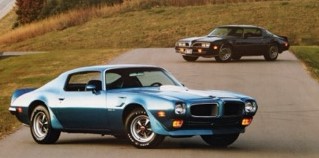
He said; “While writing for High Performance Pontiac magazine and then authoring both Firebird books, I have had the chance to interview a great number of former Pontiac engineers and stylists. I have found each and every one of them to be passionate car enthusiasts who went to work each day loving what they did. It’s tough to say who was the most interesting person I interviewed for this project because they were each interesting in their own way.”
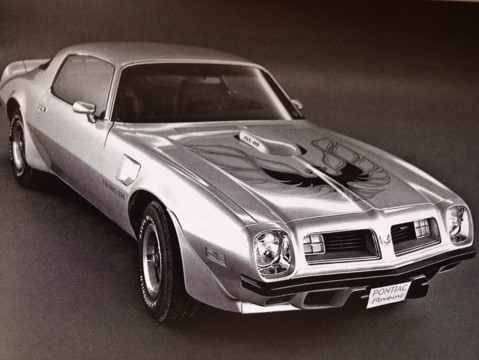
“Pontiac issued a series of press photos in late April 1975 to announce the new L75 455 H.O. package to dealers and media outlets. It always included a photo of a Sterling Silver Trans Am …, but this particular photo is rarely, if ever, shown. (Photo courtesy GM Media Archives.)”
“One person that I hadn’t talked to before this project was Bill Davis. He worked in Pontiac Studio for John Schinella and was a real hot-rodder. He was often assigned a task by Schinella and was charged with conceptualizing an idea. Davis was (and remains!) a true Pontiac enthusiast and was always looking for ways to incorporate tributes to earlier Pontiacs in his design ideas. He was a pleasure to get to know. And because he was so heavily involved with the year-to-year updates as the second-generation Firebird evolved and has such a sharp memory of his time in Pontiac Studio, I am so fortunate to have been able to include him as part of the project.”
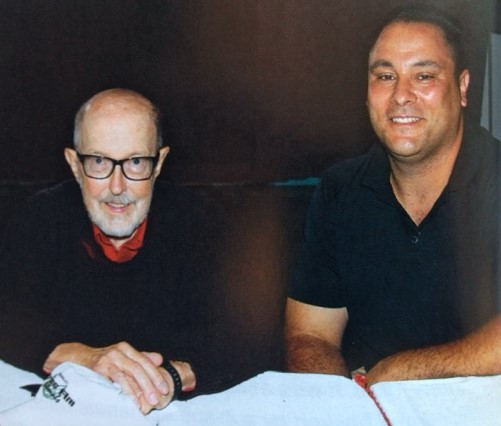
Rocky Rotella with former Pontiac Studio Chief Designer, Bill Porter at the 2016 Indian Uprising event in St. Charles Illinois.
The book includes an insightful Foreword by Bill Porter, who was at the time the Chief Designer, Pontiac Studio. Creating and designing vehicles back then was done by a small number of people having a great influence, and Bill Porter most likely had the most influence on creating the second-generation Firebird. With the car being close to 50 years old, we are fortunate to still have GM Designers and Engineers like Bill Porter, Herb Adams and John Schenella still available to talk with about how they created these beautiful automobiles that we are so passionate about. Here’s one of Bill’s quotes from the book; “From the beginning, those of us who worked on this car tried with all our might to create a great American GT car. We poured our hearts and souls into it. I could hardly wait to get to work in the morning! It’s something of a miracle, in my mind, that this car survived as long and as mightily as it did, in production from 1970 to 1981. Most of those that manned the drawing boards and shaped the clay models in Pontiac Studio in that uneasy era are gone now. But thanks to you as readers, their work lives on.”
In the hobby, we are blessed that guys like Bill Porter occasionally are guest speakers at big Pontiac events like the Indian Uprising in St. Charles Illinois. If you get the opportunity, I would highly recommend you take the time to attend one of his lectures.

My favorite part of the book is the first chapter about the development of the second Gen Firebird. Especially the details surrounding the tension between John DeLorean, the president of the Pontiac Motor Division and Bill Mitchell VP of Design Staff for all of General Motors. It seems that Mitchell and DeLorean/Porter lived in a stress-filled environment at odds with each other over the vision and style of the second installment of the Firebird. I was fascinated to learn how DeLorean even manipulated suppliers price quotes to make sure he got the Endura front bumpers on all of the types of Firebirds, and not have to settle with a cheaper chrome over steel bumper on the base Firebird and Esprit models.
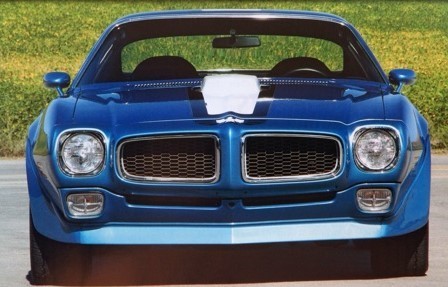
This Lucerne Blue 1972 Trans Am is best identified by its honeycomb grille.
I asked Rocky if he felt that he accomplished what he had hope to in writing this book, and he said; “From the book’s onset, I was bound and determined to make The Definitive Firebird and Trans Am Guide- 1970-1981 unlike any second-generation Firebird book before it. I have spent my lifetime researching this material and collecting unique and interesting documentation. I have also been able to uncover a number of unique cars. I knew that if I could stay on course, I would be able to deliver hobbyists with a book that contained at least some material they hadn’t read before for each model year. I sincerely believe that I’ve succeeded in that and am very proud of the result.”
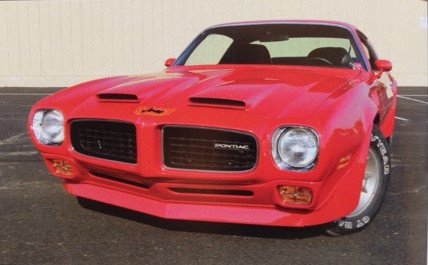
This is Bill Porter’s personal Trans Am he had restored after his retirement from GM. Rocky explains; “He added the Formula’s dual-scooped hood to create the Trans Am package that he originally intended.” (Photo courtesy Chris Phillip.)
I was also curious of what Rocky found was the most interesting fact that he learned in writing this book, and maybe even something that surprised him. He said; “As a true Second-gen enthusiast, and one that thrives on performance, I find the ’73-74 Super Duty 455 engine quite compelling. So many different stories about that engine have been written in hobbyist publications over the years, and a great number of them contain some inaccuracies that have been recounted so many times that they have seemingly become fact.”

When the rest of Detroit was reducing horse power, Pontiac introduced the mighty Super Duty 455.
“I was able to talk to the group of Pontiac engineers that developed the SD-455 and saw it through to production. The stories they told were amazing and I was able to piece together a great deal of its backstory and origins. As the engine raced toward production for the ’73 model year, it was halted by Pontiac’s newest general manager, Martin Caserio. Many publications wrote about him and the meeting that he called with engineering/management to discuss the SD-455 just before it actually was released. I have always wondered what occurred at that meeting, but no one that I spoke with could recall specific details.”
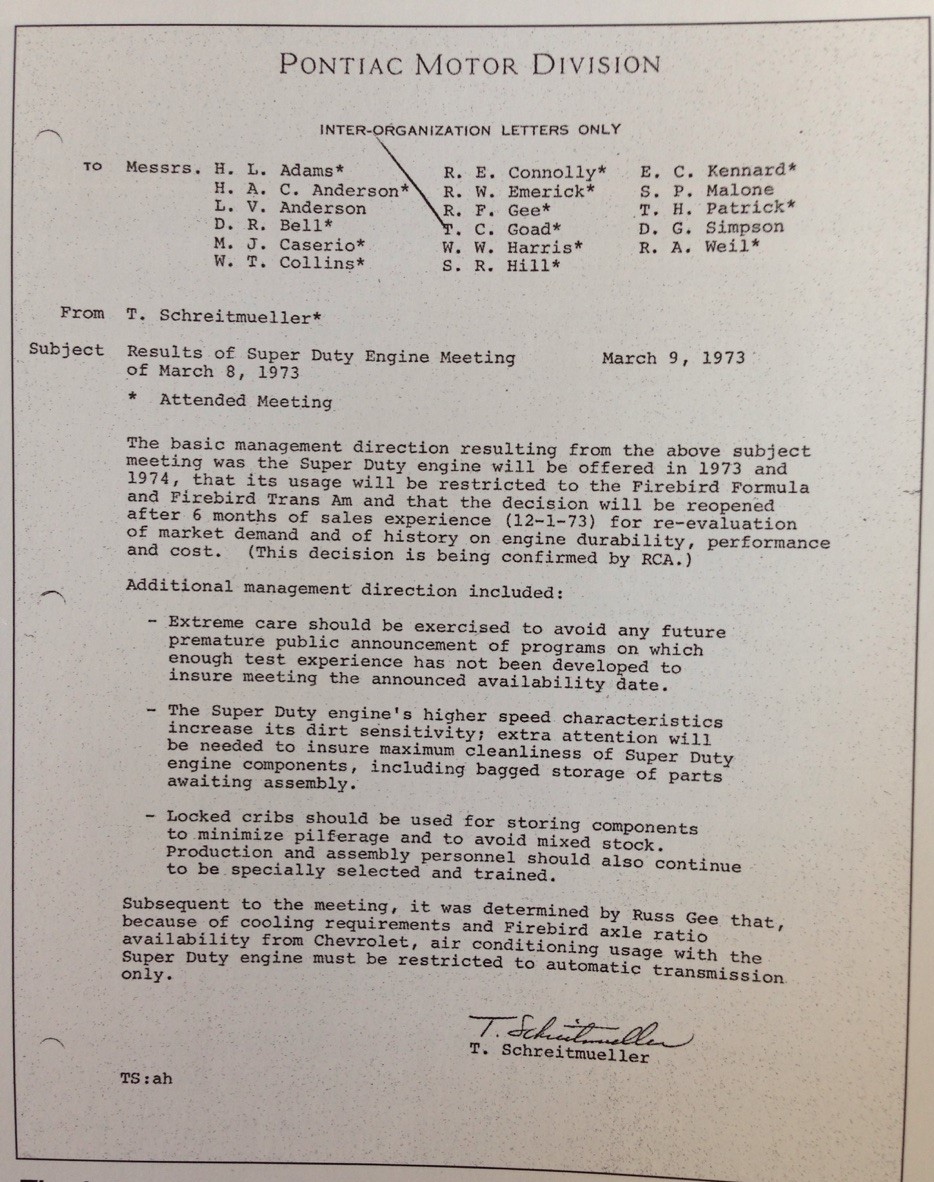
This is the first time the public will see this Internal GM memo on the SD 455.
“During my final push to finish the book, I made one last trip to the Pontiac-Oakland Museum and Resource Center in Pontiac, Illinois. Tim Dye had acquired a literature collection from a Pontiac engineer and he shared it with me. It proved a treasure trove of information and hidden within were a series of internal memos on the SD-455 including the typewritten notes of Caserio’s meeting! I simply couldn’t believe what I was looking at. In my hands was the documentation that I had spent more than 20 years searching for. It was quite fulfilling as a researcher. And it’s quite humbling to know that my book was the first time that Caserio document was shared publicly.”


Like his first gen Firebird book, this one also contains a wonderfully detailed Appendix to be used as a reference guide with production numbers for the enthusiast.
It contains information and codes for every year broken down into categories such as: Interior colors, Cordova/Canopy Top Colors & Exterior Colors. A chart on Cam Specifications. A chart on the production totals for every factory option by year, listed by UPC, Code and the Description so you can quickly determine facts like there were only 72 cassette players (UPC 55/Code 414) installed in all the Firebirds in 1972. The final chart is where I keep spending most of my time – Production totals broken down by model, engine, transmission, color and production facility. This last chart pays particular attention to the performance models: Formula, Trans Am, Super Duty, Special Editions, 10th Anniversary, Turbo Pace Car & the color-themed Esprit.
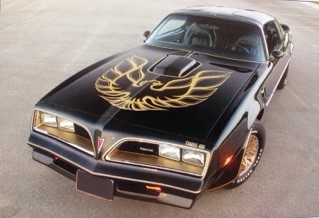
The 1977 Special Edition Trans Am, made popular by the movie “Smokey and the Bandit” is among the most desirable Firebirds today.
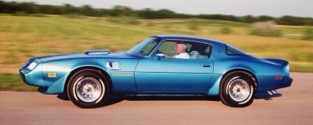
In summary, author Rocky Rotella delivers many detailed facts and figures of the second gen Firebird and goes straight to the source, interviewing the people that created and designed the car, like Bill Porter and Herb Adams & Bob Luyckx as well as digging up historic documents from the GM Heritage Center in Warren Michigan and the Pontiac-Oakland Museum and Resource Center (POMARC) in Pontiac Illinois.
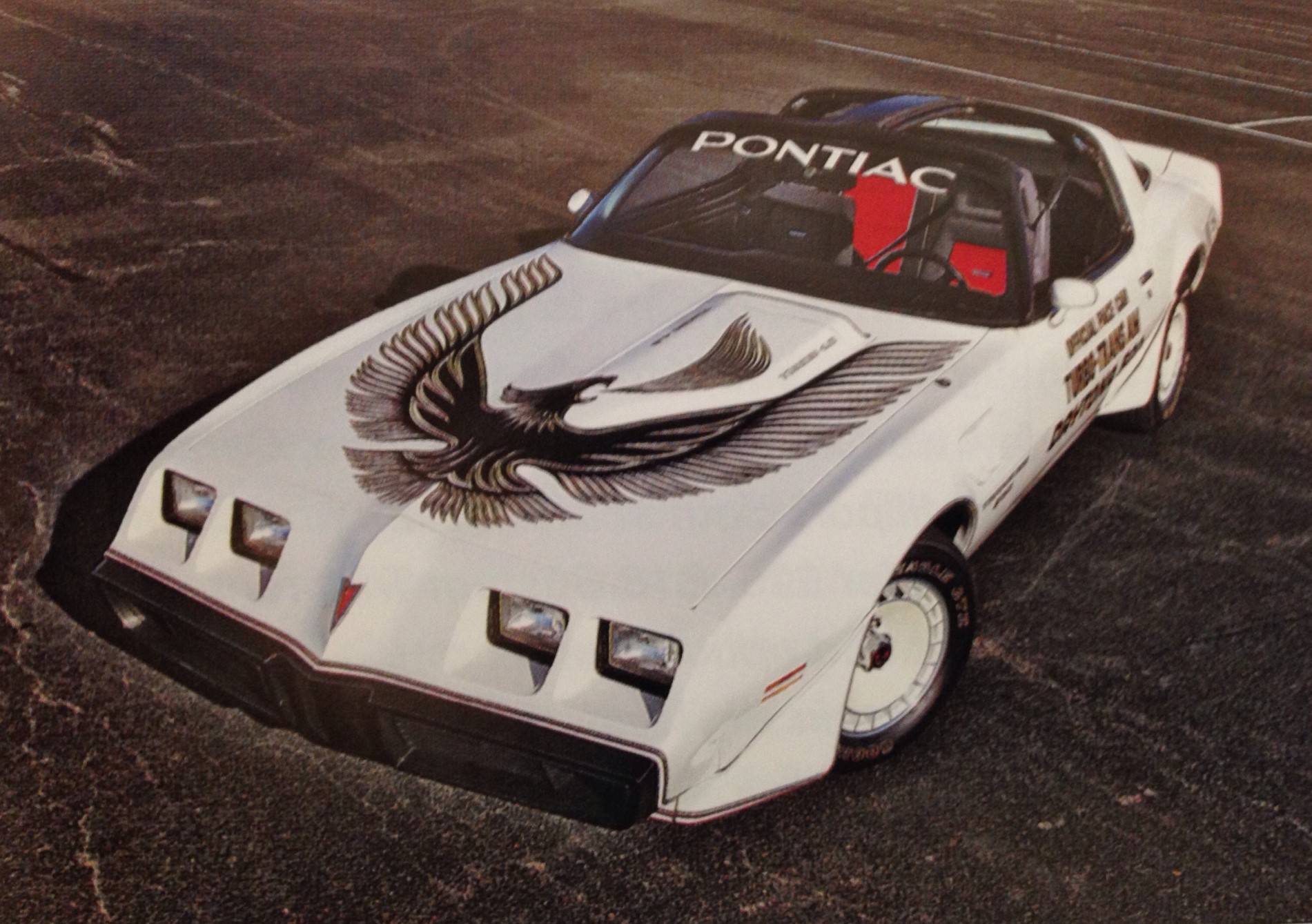
A 1981 Turbo Trans Am – the last year for the second generation of Firebirds.
There are also beautiful pictures of Firebirds, Trans Ams and their detailed parts. I think you will enjoy reading this book, and I highly recommend it as a resource for the Pontiac enthusiast. My final question for Rocky was asking what he really wanted to make sure I convey in my review of his book? He said; “I’d ask that you let hobbyists know that the book is full of interesting facts, production numbers, and quotes and stories that separate it from any second-generation Firebird book written before it. There’s so much new information that everyone can take away something they never knew before.”
You can find this book at large retailers such as Amazon and Barnes & Noble. It is also available from a variety of online sources including Rocky’s website, www.PontiacV8.com, where autographed and personalized copies can be obtained.

I first met Rocky Rotella in person when our club was able to assemble several first gen Firebirds for his first book in the summer of 2015. We’re seen here in front of my friend, Teri’s 1974 Admiralty Blue Formula Firebird.
(Story by Ken Pitcher, most pictures taken from the book.)

The material on this site may not be reproduced, distributed, transmitted, cached or otherwise used, except with the prior written permission of Midwest Firebirds, 2018 ©


